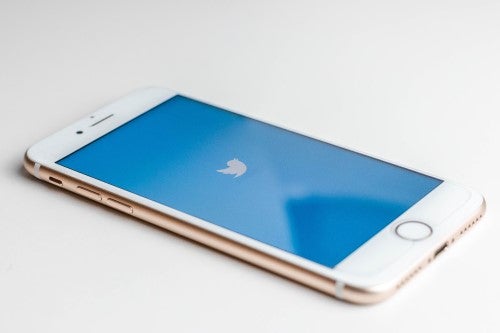Since Twitter’s launch in 2006, what was once a small service designed to facilitate communication between small groups has become one of the most visited websites in the world. That makes Twitter the place to be for many small business owners who want to take advantage of a strong marketing opportunity to reach more customers, deepen connections, and increase sales.
Let’s look at some compelling reasons for your business or brand to be active on Twitter, and how to get started.
Twitter by the numbers
Here are five powerful 2019 Twitter statistics compiled by digital marketing agency Omnicore that reveal the social media platform’s popularity and potential:
- Twitter has 330 million active monthly users around the world
- 22% of US adults are active on Twitter
- Twitter is (relatively) young: 37% of Twitter users are between 18-29, with another 25% between 30-49
- 67% of B2B businesses use Twitter as a digital marketing tool
- 40% of Twitter users reported purchasing something after seeing it on Twitter
What can Twitter do for your business or brand?
While the numbers above are impressive, it may still be unclear how Twitter can function as a robust marketing channel for many B2B and B2C businesses.
Twitter allows your business to:
- Reach new audiences, particularly certain demographics. If your target audience includes adults (up to around age 50) and young adults, you’ll find them on Twitter. While this audience will be receptive to other marketing strategies and channels, having a presence on Twitter is a critical component to both reaching this target market and to being seen as “legitimate” in their eyes.
- Monitor conversation about your brand. Being active on Twitter puts you right in the heart of the “word on the street.” You’ll have access to customer reactions and industry conversation about your products, services, and image. This is gold for tweaking your marketing strategies and really learning about what your customers’ needs and problems are so that you can refine the solutions you offer.
- Provide a channel for simple, direct customer service. Twitter has become the de facto channel for customer service. Rather than call or email, many consumers want the ease of simply tweeting at you (“tagging” your business in their tweet so that you get notified) or reaching you via direct messaging (DM) on the platform.
While you might prefer phone calls or emails, if your clients don’t utilize those methods then you’re missing a chance to provide stellar service. Twitter gives you the opportunity to respond to these customers in their preferred way (with the option to move any customer conversation beyond the platform by, say, asking for a number you can call them at after you’ve initially connected about the issue). - Be part of the larger conversation. By allowing you to follow other brands, businesses, leaders, and players in your field, Twitter provides an opportunity for wider conversation within a community. You’ll be able to seamlessly join into collective conversations about ideas, changes, news, humor, and more.
- See what your competition is up to. In the same way that you monitor your brand, you’ll be able to see what your competitors are up to and how their efforts are being received.
- Communicate in real time. Share breaking company news, sales and promotions, seasonal changes, and more with your followers. Along with the timeliness of content, this level of interaction strengthens a human, living connection with your target audience, which makes it easier for them to become a customer or evangelize your brand.
Is Twitter right for your business?
Sounds great—sign me up, you say? Splendid. But before you move forward, there are a few things you need to make sure you have ready, before you dive in:
- A dedicated employee. Whether that person is the owner or a trusted employee, you need someone with the time and energy to update and interact with the platform, post, monitor, and respond to customers regularly. It’s important to have this be one person, or a carefully supervised small team, rather than allowing anyone at your business to have access to the account.
- Well-defined brand guidelines. To maintain your brand’s consistency, it’s important to have a codified sense of the voice you’ll use to speak for your business (particularly when delegating social media to another employee or team of people).
- A customer service strategy and ability to process requests through this social media channel. As noted above, if your business has a Twitter profile then your followers will expect to be able to reach you through the platform.
- A thick skin, at times. Your followers will, at times, impulsively tweet the first thing that comes to mind—regardless of whether it is kind, constructive, or accurate. You need to be able to handle these occasional bombs of knee-jerk criticism without giving it back. Can you read a negative tweet and respond constructively, in the spirit of customer service? If so, you stand a chance to win over not just the disgruntled customer but a swarm of new, potential customers who now associate this level of deft skill and service with your brand.
Getting started on Twitter
Once you’ve determined if Twitter will be an important tool for your digital marketing arsenal, you’re ready to get started.
- Set up an account.
Starting an account at Twitter involves choosing a display name. While Twitter allows you to change your display name as often as you’d like, we recommend selecting a name that quickly and directly references your business (ideally, the name of the business itself) and keeping it consistent to prevent confusion.While setting up your account, make sure that you use branded images (such as a logo), voice, and messaging (in your profile description) to ensure all of your marketing materials remain consistent across channels and outlets. - Follow, follow, follow. Once your account is live, spend some time browsing the platform and following industry thought leaders, companion and competitor businesses, trade publications and relevant media outlets. Following other profiles brings you into the conversation (as noted above) and is also a good strategy for gaining followers as the people you follow choose to follow you back.
- Plan your content. Once you’ve explored a bit, you’re almost ready to jump in. But first, you need to plan what you’ll tweet. We recommend coming up with an editorial calendar to plan out a week’s or month’s worth of tweets that cover a variety of topics:
- Tweets about your products or services
- Tweets about your field or industry
- Questions for your customers
- Behind the scenes shots of your business and workers
- Sharing articles, tweets, or news relevant to your customers
- Company milestones
- Thankful tweets expressing gratitude
- Interact. Along with regular posting, to establish a strong presence on Twitter you can also retweet tweets from others, comment on tweets, and of course respond to customers and others who tweet at you (publicly, initially, but then be ready to move the convo to DM or offline to hash out deeper customer service issues).
- Spread the word. Don’t forget to publicize your account and invite your customers and potential customers to follow you as well. You can put a link in email campaigns, on your website, and on printed materials. Don’t be shy about asking folks to follow you—everybody does it and it significantly increases your chances of getting a new follower.
For further reading, check out Twitter’s help guide for creating a small business profile and Wired’s Twitter tips for beginners.
Twitter isn’t for every business, but we’d venture a guess that it could serve many of ours well. The learning curve can feel steep initially, but the payoff for streamlined, up-to-the-minute communication and deeper relationships with customers can be worth the time and energy for your small business.




